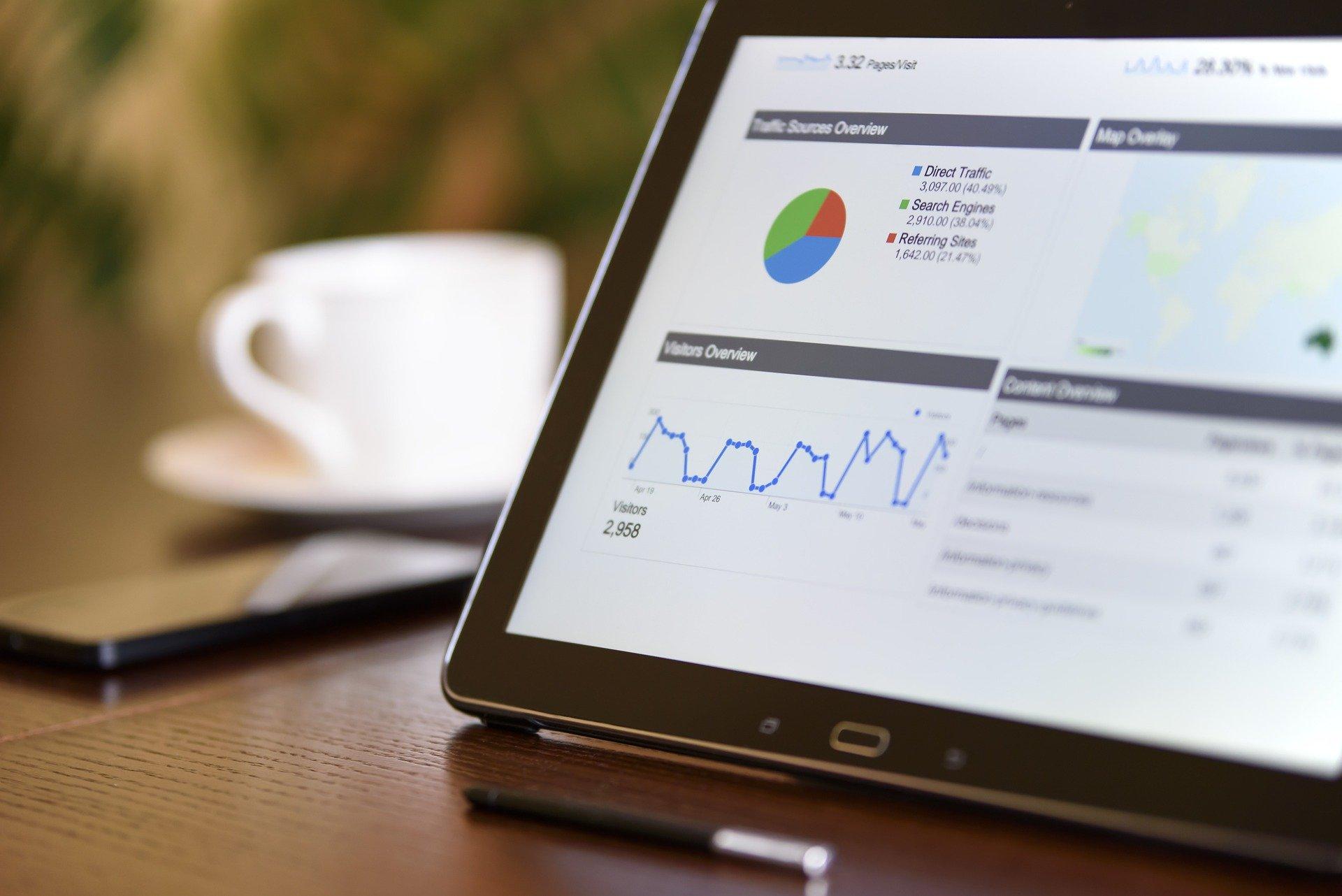If you are in business, then you want to be found. Thus, it would be best if you had a solid marketing plan based on the latest SEO news. A clear understanding of what SEO is and how it can help your business succeed is the first step to increasing your rankings on internet search engines. Since SEO is a long-term process, you have to consider many details when making decisions – now imagine having to read every word of an SEO report on your website.
SEO reports can be challenging to read. For example, you might have a perfect strategy but not have enough data to prove it. Or you may have tried several techniques, and none of them worked. In this article, we will be talking about how to read an SEO report and some tips that could help make your life easier when reading one.
What is an SEO report?

An SEO report contains a summary of metrics and data that show how well your site performs in terms of search engine optimization. The information included in each can vary depending on each client and on who generates the report. Your SEO team will likely discuss your business’s individual goals and KPIs to determine what will be measured and reported.
Typically, reports include data about total traffic, organic traffic, conversions, acquired backlinks, loading speed, and other technical information.
Why do SEO reports matter?

Regularly generating reports for your website is essential to helping you determine how well your site is performing in search engines, but also to measure whether you are making any improvements as time passes by. Regular reporting can help you identify trends in traffic, identify traffic drops and increases and help measure how effective a new SEO strategy is.
If you make any changes in your content marketing or website, reports can help you measure the effect of said changes on your site’s performance.
How To Read an SEO Report?
Reading an SEO report is one of those things that can take a lot of time. We all have different styles. Some of us like to read everything in detail; others only skim through it and then do our research based on the information provided. Here are some tips to help you read an SEO report:
SEO Score
Let it be Google Analytics or any other tool; it displays a large score box that indicates the overall performance of your website. The average score of how well every metric is optimized ranges from 1 to 100. In other words, it gives you an idea of how strong your presence on Google is.
The score is the first thing you see when you generate an SEO report. Upon good optimization and performance of your site, it displays a good number ranging from 75-100 (green colored ring). However, if your website performs poorly, it shows significant red/orange signals with a low score.
Technical SEO
Typically, SEO reports will highlight important SEO mistakes found on your site. For example, your SEO will report if any 404 errors, broken links, or uncrawlable pages are present on your site. They also identify duplicate content and meta-descriptions, lack of ALT image text, security vulnerabilities, and slow-loading pages. All of these technical issues can negatively affect your general SEO score. For this reason, it is important to keep track of technical SEO errors each month.
Keyword Rankings
Each business has a set of primary keywords to target. Basically, these are profitable keywords for your industry that you want to rank well for. Each SEO report typically includes information about the position you currently hold for each of these keywords. It helps you to see how far behind (or above) you rank against your competitors and if you are improving or losing your position. This information is essential when planning out your content marketing strategy.
At the same time, each report should help you identify what your top organic keywords currently are (the keywords that you currently rank best for and direct traffic to your site). This way you can determine what is already working and use this information to take future content decisions.
Issues to look for in your SEO report
Most SEO reports have a section on common SEO problems. This section is designed to help you correct problems so your site can be crawled more often and properly indexed by Google. Some common issues listed are H1, H2, meta tags, sitemap errors, etc.
If you are not sure what is wrong, here are some common issues you might encounter:
H1 and H2 Headings
H1 and H2 headings are two different things. H1 is the top heading of your content, while H2 is a secondary heading that appears below your main heading. In other words, if you have an H1, it is your whole post’s headline. If you have an H2, it is the second headline in a list.
Given this difference between the two types of headings, many SEO reports cannot distinguish them. This can be a problem for marketers, who might want to know which one is more important for their site’s SEO performance.
To understand which type of heading should be used on your site, look at what Google considers when ranking sites. Google looks at page titles and meta descriptions as part of its algorithm for ranking websites. It also uses these same factors when determining search results pages (SERPs). In other words: do not let the lack of differentiation between “H1 + description” vs. “H2 + description” fool you into thinking they are not equally important!
Keywords Usage
It is easy to get excited about the keywords your site ranks for, but an excellent SEO report will also tell you how frequently those keywords are used on your site versus competitors. If your site has a lot of technical terms and jargon that do not translate well, then you need to focus on the basics — keyword selection, content strategy, and quality.
If a single page has been optimized for multiple keywords, it is probably not the best choice for your content. However, if you see numerous pages optimized for the same keyword, that is a good sign that you can use this keyword as part of your content strategy.
Suppose you see pages with multiple keywords that do not appear to rank well. In that case, it could be because the site is penalized for having too many duplicate content issues (such as having identical images or duplicate text).
Titles And Descriptions
Another thing you will look at is the title tag and description of your site. The title tag should be a single sentence or two that describes what the page is all about. Again, you can use keywords in your description, but ensure they are relevant to the page and do not overdo it.
Most search engines will transpose titles up to 70 characters and descriptions up to 160 characters.
Sitemap Tests and Results
Another thing to look for in any SEO report is a Sitemap test. A Sitemap test is a comprehensive search engine analysis that identifies all the pages on your site and how search engines index them. The test results will tell you which pages are missing from the index and where they should be located on your site. Check out this article to learn more about how to read an SEO report.
SEO reports also include information about your site’s backlink profile, including:
- The total number of links pointing back to you.
- Links come from Google (organic) vs. links from other sites (non-organic).
- Links coming from websites that have been penalized by Google.
- Links pointing to pages on your site that are unimportant or do not provide value (i.e., 404s).
- Favicon Test and Validator
This is a critical aspect of any SEO report. If there is one thing that can kill your rankings, it is having a broken favicon and not knowing it! Favicons are small images next to links when you hover over them with your mouse cursor. They are what users see when they land on your site, so they must be perfect and have no errors.
Even if your favicon is displayed correctly, there may be an issue in the code that causes problems with search engines like Google and Bing, which include “favicon.ico” files in their crawling databases. To get around this, many developers will use a service such as IconFinder to generate new images for their clients’ needs. This can be done manually or using an automated tool such as IconsGenerator.
Page Objects
This is where you find out how many Google to index your site pages. It also gives you a good idea of which pages are being crawled and ranked and what keywords these pages are ranking for.
In Google Analytics, you can look at the Page Objects report to see which pages are most successful. In addition, it will show you where your site visitors go after they visit your homepage and before they leave your site.
SEO Friendly URL
Your URL is the starting point for any SEO report. It is the most important thing when it comes to SEO because it is what people see when they Google your name or brand.
Look at the URL. If it is not optimized, it will show up as red. That is why you want to ensure that all your URLs are optimized.
Speed Optimization
The speed optimization section of the SEO report looks at the pages on your website that are slow and how much time it takes them to load. This is a significant part of a Google SEO audit because slow-loading pages can negatively affect your organic search results.
The speed optimization report shows which pages are performing best in loading speeds, followed by which are performing worst.
Mobile Friendliness
The first thing you should look for in an SEO report is whether it is mobile-friendly. This is important because Google has made it easier for people to find your site if they are on their mobile phones, and this means you will be able to get more traffic as a result.
The higher the number, the less likely someone will be able to find your business on their phone. The ideal mobile-friendliness score is 70 or above. Anything less means you are missing out on potential customers who might otherwise have come to your site during their commute or waiting for a train.
Server and Security
Another thing you should look at in an SEO report is the server and security section. This is where you will get information about the server setup, how many requests per second it can handle, and how many resources it uses, including:
- URL Canonicalization
- Server Signature
- Plaintext Emails
- IP Canonicalization
- Directory Browsing
- Safe Browsing
- Libwww-Perl Access
- HTML Page Size
The HTML Page Size Test report will tell you how many visitors are on your website by showing the number of requests per second (RPS). This test can determine your site’s performance regarding load speed and response time. In addition, the more visitors a site has, the better it ranks on search engines like Google.
Deprecated HTML Tags
Deprecated HTML tags are the ones that no longer work in modern browsers. For example, <center> will not display correctly in current browsers.
In the SEO report, there will be a list of some of the most commonly-used HTML tags. Unfortunately, these are the ones that Google considers deprecated, meaning they are not allowed in search engine results. So if you see one of these tags on your page, you should know why it is deprecated and what to do about it.
Image ALT Text
The image ALT text is a handy metric to look at in the SEO report and check the quality of your website. It is easy to see if your images have been optimized for search engines. This is a very important aspect of your site, and if you do not optimize your images, you will negatively affect how users view your site.
The image ALT text test will show you how many characters there are between each word and sentence in each image on your site. This information can help you ensure that your images are not too long or too short and are optimized for SEO purposes.
Google Preview
Google Preview is a feature of Google Analytics that shows how users view your website based on their browsing habits. It is a great way to get a quick and easy overview of what people are looking at.
We recommend setting up Preview at the start of your optimization efforts to understand who visits your website, what they do there, and why.
Social Media Connectivity
Another thing you should look at in any SEO report is social media connectivity. This is a primary but essential metric that tells you if your website is connected to any social media platform, if not, how to resolve the issue, and how well your site is represented on social media platforms.
Social media is a critical part of search marketing. It is not just about having an account and posting in your feed. It is about connecting with your audience, following their conversations, and contributing to the discussion.
Final Words
SEO is not an exact science because Google does not make it so. As a result, SEO reports can make it difficult to present accurate information in a standardized format. However, your team of SEO experts can help you determine the most important KPIs to report and tailor your reports to your advantage. You can use the data from SEO reports to improve your site’s performance—especially if you are relying on organic traffic.
